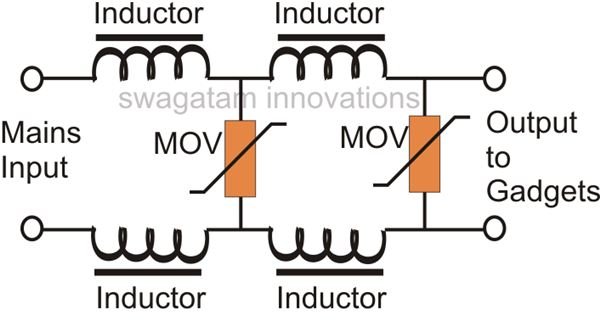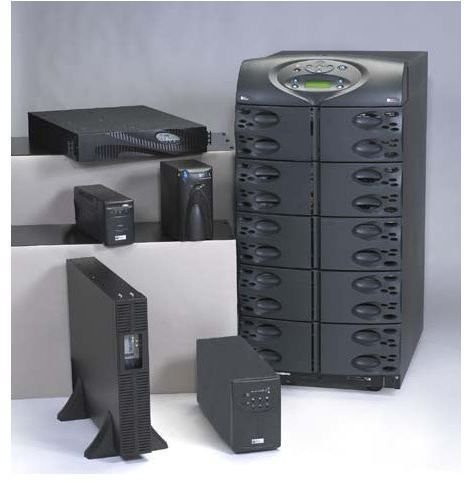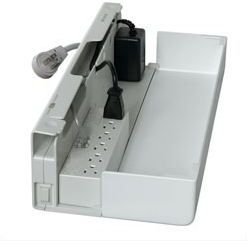Home Entertainment Surge Suppressor or UPS Protection?
You’ve Got the Power
A home theater relies on electrical power to work. Even more to the point - this electrical power needs to be consistent and constant or the electronics of the DVD player, amplifier or HDTV will suffer. The U.S. electrical grid is far from stable, and most communities experience a brownout or power surge on a monthly basis. Some areas even experience brownouts and power discrepancies more often than that. Add to that interference and “noise” brought into the home theater components through the electricity and it’s no wonder that there is a need for devices that can both ensure that the power is being delivered and “clean” it up as well.
The two devices that can be of aid here are surge protection and uninterruptible power supplies. Even the most basic home theater can profit by having one, if not both, of these devices.
Surge Protection
The purpose of a surge protector is to keep random current fluctuations from affecting the electronic components plugged into it. It also works to prevent the effect where electrical power can cut off momentarily and then return in a “surge”. This can not only lessen the effective life of electronics but destroy their ability to work altogether. A surge protector is at minimum the first line of defense against power fluctuations.

Surge protectors can come in varying sizes and shapes. As an example, Belkin makes concealable surge protectors, in that they are designed to accept the cords within their shell and blend into the wallboard, thanks to a chameleon like look. Their Conceal Surge Protector model grounds 11 outlets and can also take care of phone/fax-modem protection as well.
Larger models are designed to work with a whole series of electronic components and include power conditioning features as well. The Furman PL-PRO DMC is a good example here. It not only provides power conditioning and surge protection, but rack mounts into a home theater professional setup. It includes Voltmeter/Ammeter displays for line voltage and current draw and has LED indicator lights with dimmers.
How Surge Busters Work

Electrical surges can be in the form of a sudden steep rise in the line voltage, which probably lasts for not more a fraction of a second. However the sudden induction of a high voltage might force your precious electronic gadget to “gulp” a huge amount of current, causing an instant damage or burning of the involved electronics. Surge protectors are designed to stop and neutralize the entry of these sudden voltage peaks.
Opening a typical surge buster unit may reveal a circuit, consisting of some copper coils wound over ferrite drums and a few subsequent MOVs or Metal Oxide Varistors. (Click on the image for a better view)
MOVs are built with thee parts: a metal oxide material and two semiconductors. When the voltage is stable, the MOV does nothing, however when the voltage exceeds a certain level the MOV will conduct part of the current to eliminate the extra voltage.
Uninterruptible Power Supplies
Many people are familiar with the small UPS devices that attach to computers and provide power in case of an electrical failure. UPS devices designed for use with home theaters operate on the same principle but tend to have a larger battery and more functions.
Now why be concerned about having a UPS? Consider that most home theater components operate on a “standby” basis where they continue to draw a tiny amount of electrical current even in the off state. So they are still vulnerable to a sudden interruption in service.
It can be even worse - take the instance of a front projector or rear-projection HDTV which uses an incandescent bulb to provide the light source for the image. Under normal conditions, turning the projector or HDTV off activates a fan that helps to cool the bulb as it shuts down over the course of a minute or two. A sudden interruption of electrical power negates this procedure and cuts off the bulb cold. The result of this is a loss in the bulb’s overall “life” - which can be as great as 30%.

Worse yet, the bulb could experience a shock from the sudden power loss and its filament could burn out. Having a UPS installed so that it can deliver a continuous power stream under such conditions (even if only for the few minutes needed to properly shut down the projector or HDTV) is both sensible and worthwhile.
A UPS come in a variety of sizes and power. It is possible to get a small unit that can protect a single component like an HDTV for a more than reasonable amount of money. Or you can get a unit that handles a large number of components; for example the SolaHD DC 10-24 UPS. It comes with internal and external battery options, an automatic self test and an industrial design and 14 minutes of backup time.
Dealing with Reality
Having a home theater beats going to the movies when it comes to convenience. But that doesn’t mean there aren’t still issues that need to be maintained if everything is to work as it should - and for a long time. Having surge protection and UPS protection may not be as sexy to look at as a Blu-ray player, but it will pay for itself in the loss of headaches right away.
References
- Emerson Industral - http://www.emersonindustrial.com/en-US/egselectricalgroup/brands/solahd/Pages/solahd.aspx
- How Surge Protectors Work - http://electronics.howstuffworks.com/everyday-tech/surge-protector.htm
- belkin.com - http://www.belkin.com/us/
- FurmanSound.Com - http://www.furmansound.com/product.php?div=01&id=PL-PRODMC
